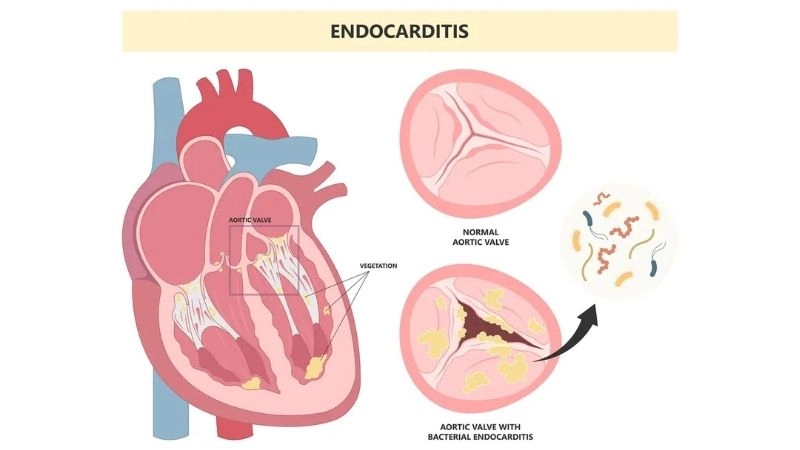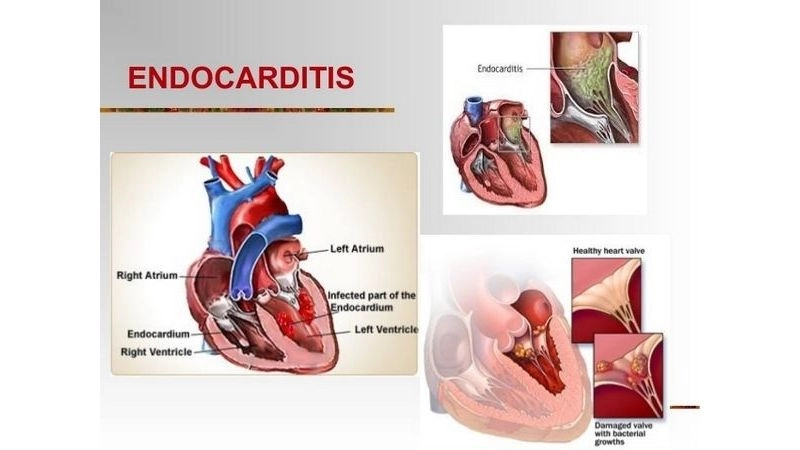Endocarditis (leading to valve damage) is a serious condition where heart valves are harmed by infection. Recognizing symptoms early helps prevent fatal outcomes.
What are the main causes of Endocarditis (leading to valve damage)?
- Bacterial infection enters the bloodstream and attaches to heart valves, creating inflammation that progressively damages delicate heart structures.
- Poor dental hygiene allows bacteria to migrate from oral cavities into the bloodstream, greatly increasing the risk of endocarditis development.
- Weakened immune systems make it difficult to fight infections, enabling bacteria to colonize and damage heart valves more easily.

Endocarditis symptoms include fever, chills, fatigue
>>> Discover more: Pulmonary regurgitation (insufficiency) symptoms explained
Key symptoms of Endocarditis (leading to valve damage) to watch for
- Persistent fever, chills, and night sweats often indicate ongoing infection directly linked to endocarditis complications.
- Shortness of breath and chest pain result from impaired blood flow through damaged heart valves caused by endocarditis.
- Unexplained fatigue, weight loss, or swelling of the legs signal advancing disease and heart valve dysfunction.
How can you prevent Endocarditis (leading to valve damage) effectively?
- Maintain excellent oral hygiene with regular brushing, flossing, and professional dental checkups to minimize bacterial entry.
- Seek medical care for infections immediately to prevent bacteria from spreading to the heart.
- Follow antibiotic prophylaxis before certain medical or dental procedures if recommended by a healthcare provider.

Endocarditis treatment uses antibiotics or surgery
>>> Discover more: What is Bicuspid Aortic Valve Disease and why it matters
Images visual examples of Endocarditis (leading to valve damage)
Endocarditis (leading to valve damage) is an infection of the inner lining of the heart, often affecting valves. Visual examples show inflamed, thickened valves, bacterial growth, and structural damage, which help explain how this disease progresses inside the heart.







>>> Discover more: Rheumatic Heart Disease causes symptoms and treatment
Endocarditis (leading to valve damage) requires timely care and treatment. Understanding its risks empowers you to protect your heart from lasting complications.




